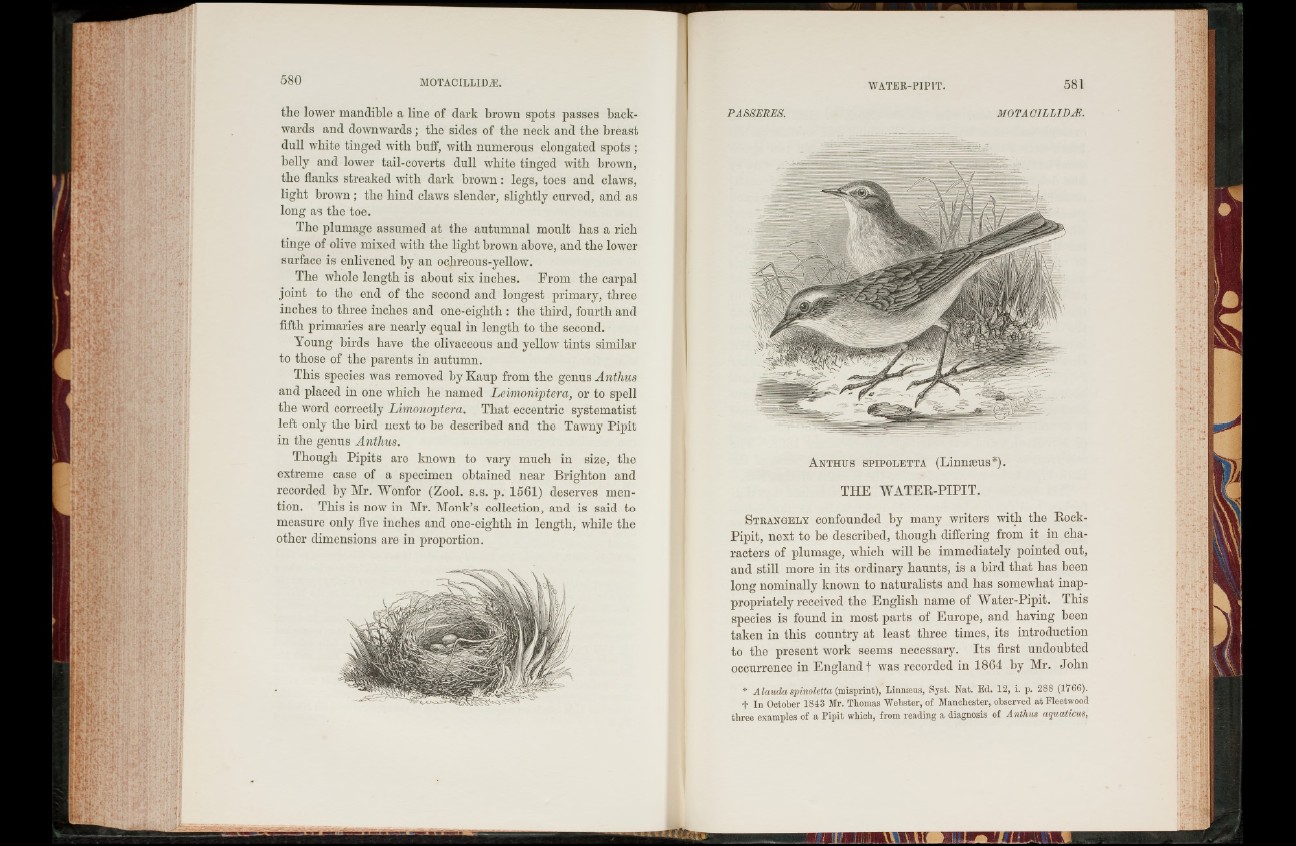
the lower mandible a line of dark brown spots passes backwards
and downwards; tlie sides of the neck and the breast
dull white tinged with buff, with numerous elongated spots ;
belly and lower tail-coverts dull white tinged with brown,
the flanks streaked with dark brown : legs, toes and claws,
light brown; the bind claws slender, slightly curved, and as
long as the toe.
The plumage assumed at the autumnal moult has a rich
tinge of olive mixed with the light brown above, and the lower
surface is enlivened by an ochreous-yellow.
The whole length is about six inches. From the carpal
joint to the end of the second and longest primary, three
inches to three inches and one-eiglith : the third, fourth and
fifth primaries are nearly equal in length to the second.
Young birds have the olivaceous and yellow tints similar
to those of the parents in autumn.
This species was removed by Kaup from the genus Anthus
and placed in one which he named Leimoniptera, or to spell
the word correctly Limonoptera. That eccentric systematist
left only the bird next to be described and the Tawny Pipit
in the genus Antlms.
Though Pipits are known to vary much in size, the
extreme case of a specimen obtained near Brighton and
recorded by Mr. Wonfor (Zool. s.s. p. 1561) deserves mention.
This is now in Mr. Monk’s collection, and is said to
measure only five inches and one-eighth in length, while the
other dimensions are in proportion.
PASSERL'S. MOT AC IL L I f) A'..
A n t h u s s p ip o l e t t a (Linnasus*).
THE WATER-PIPIT.
S t r a n g e ly confounded by many writers with the Rock-
Pipit, next to be described, though differing from it in characters
of plumage, which will he immediately pointed out,
and still more in its ordinary haunts, is a bird that has been
long nominally known to naturalists and has somewhat inappropriately
received the English name of Water-Pipit. This
species is found in most parts of Europe, and having been
taken in this country at least three times, its introduction
to the present work seems necessary. Its first undoubted
occurrence in England t was recorded in 1864 by Mr. John
* Alauda spinoletta (misprint), Linnseus, Syst. Nat. Ed. 12, i. p. 288 (1766).
+ In October 1843 Mr. Thomas Webster, of Manchester, observed at Fleetwood
three examples of a Pipit which, from reading a diagnosis of Antlms aquations,